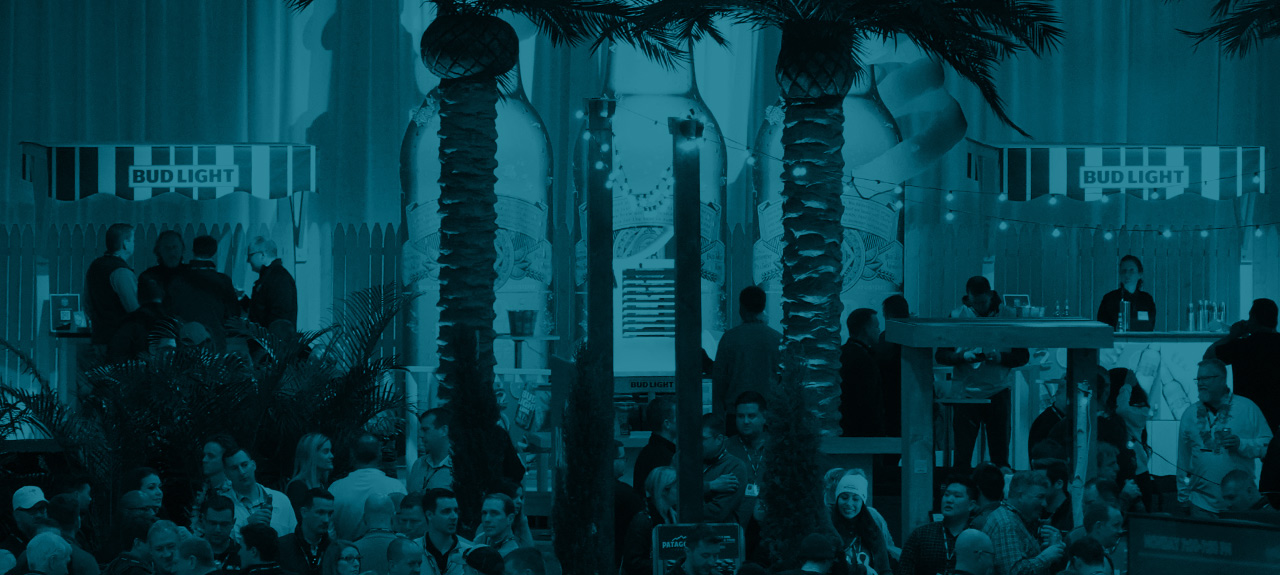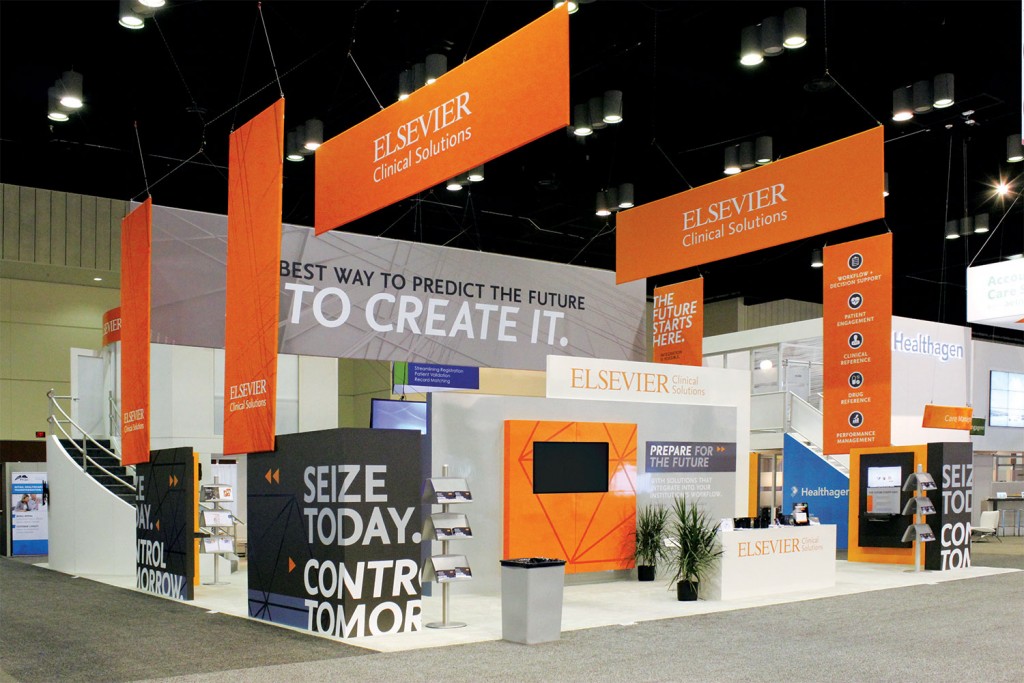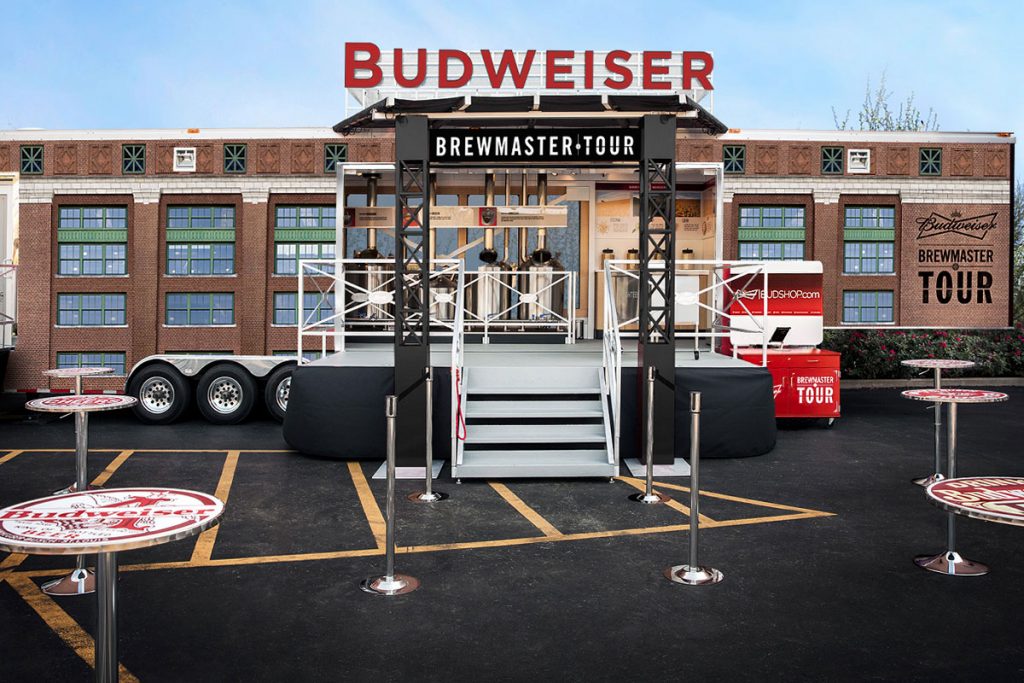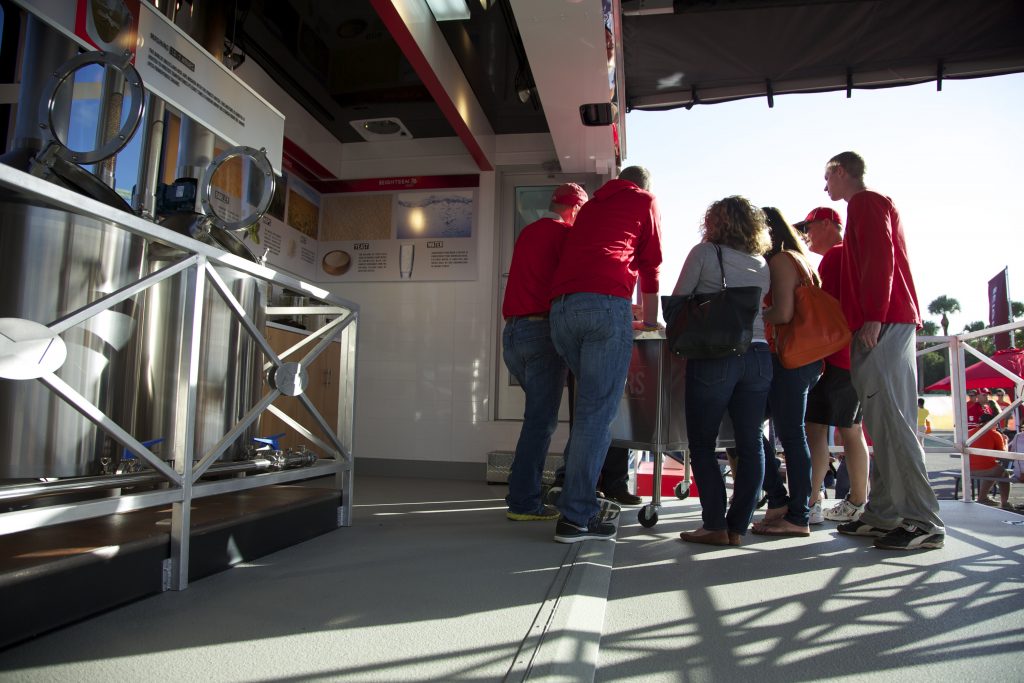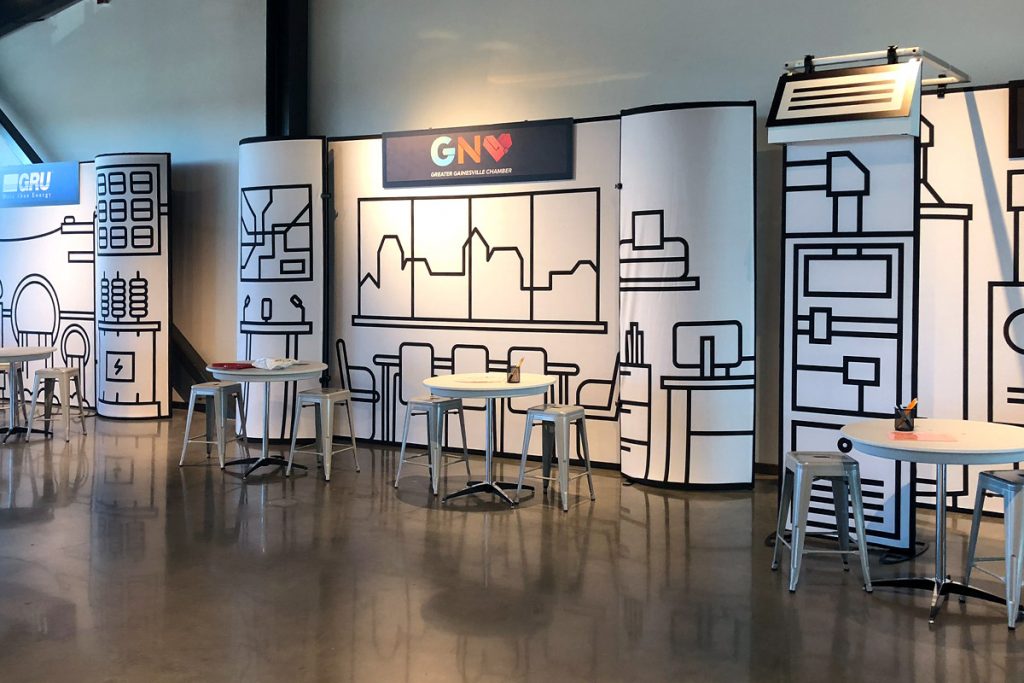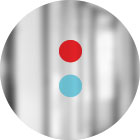Environmental design speaks to creating a temporary or permanent environment that isn’t just a place… but an experience. It’s one of the ways a brand story can really come to life. For Switch, environmental design is the intersection where branding, interior design, and storytelling converge. When these three components come together, brands are able to connect with audiences through tradeshows, traveling exhibits, and permanent brand spaces.
Marketing uses different narrative tools and tactics to not just speak to audiences but to create an open dialogue with audiences. The most effective brands use elements of communication to engage, provoke, and involve their target audience. Take a look at how Switch brings these three essential components together so that we can create brand experiences that wow audiences, communicate a story, and encourage exploration.
Branding: Communicating Feelings and Ideas Without Words
Branding is a huge part of environmental design. Your brand colors, visuals and voice should obviously be the launching point for this experience, but it’s also about what you don’t actively communicate. In a way, it’s similar to the difference between active and passive communication – just as passive communication isn’t overt communication, there are ways to communicate a message without words and sounds. A perfect example is turning your TV on mute and just watching the body language of the people on screen. You can often still get a gauge on the feelings or mood expressed in a scene from the set dressing, the lighting, and camera angles used to convey the story.
Tradeshow booth created for Elsevier to introduce Clinicalkey and encourage demos with the software.
Interior Design: A Space that Invites and Elevates Your Audience
All marketing is built upon relationships. Relationships with a brand and an audience; a product and user; a speaker and a listener. And the goal is to deepen this relationship to develop into a seller and a long-term buyer. Environmental design looks to create a space for that relationship to grow. By using the language of architecture and design, you can create an experience with the goal to engage, not just create awareness. Negative space, balance, proximity… these design considerations and many others are your tools to deepen that connection with your audience.
The Brewmaster Tour replicated the look, feel, and learnings that you experience in-person during the iconic St. Louis Brewery tour.
The Brewmaster Tour incorporated hands-on learning experiences so that visitors could feel and smell the hops and grains used in the brewing process.
Storytelling: A Central Idea that Becomes Essential to Your Audience
There’s an art to crafting a great hook. Much like the best writers, a space can grab hold of a visitor’s attention immediately. A hook or focal point is necessary to the central idea of the story you aim to tell with your space. Treat it as a compass for your story, and the results will ultimately captivate your audience. While your branding might influence how you tell the story within this experience, your brand isn’t the story. When Budweiser unveils a new commercial, they don’t simply say show off the product, they might weave a story about how Bavarian ancestors came over and settled to brew the first great American lager. When you are figuring out what story to tell, ask yourself: What do you want to be remembered for? What emotions do you want to invoke? What is the message you want your audience to never forget?
Junior Achievement “Biztown” established a town that allowed kids to learn about real-world professions and responsibilities.
We’ve been creating educational experiences for three different iterations for Junior Achievement. With each experience, we have to rethink and modernize it so that it speaks to kids in an engaging and meaningful way. In the past, these spaces recreated city environments with realistic-looking storefronts. However, we approached this new iteration in a fresh way that made it stand out – we approached the city like a coloring book where the child’s imagination could fill in the blanks. With stark black outlines and white spaces, this space communicated to kids that this is a space where you can be free to explore your curiosity and imagine a world that’s not complete without your input. Sometimes your storytelling hook might be an incomplete story that your audience completes.
When you start to outline your next environment, remember to stop and look at it from a branding, interior design, and storytelling perspective. Think about how the space communicates your brand. Consider the balance and composition of your design. And develop a story that your audience finds meaning in and wants to hear.
Are you looking to create a memorable and engaging experience with your audience that’s more than just a space?
Contact Chris Jobst
314.206.7804 or ChrisJ@switch.us






